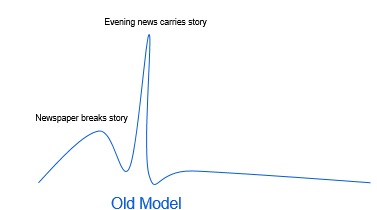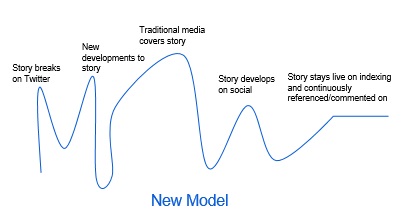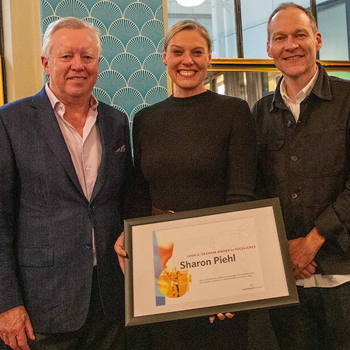Understanding the News Cycle
As communications consultants we have a particular responsibility to understand the news cycle. By analysing different news cycles over time we are able to identify interesting trends and plan accordingly for them.
The changing digital landscape has had an interesting effect on the traditional model of the news cycle from what you might expect. With the dramatic rise of information overload, new independent publishers popping up all over the show and our increasingly shorter attention spans, one would think that news cycles as they are traditionally interpreted, are getting shorter?
In truth, we are seeing the opposite trend. Social channels alongside rapid search adoption are resurfacing news in a very disruptive model.
Almost all news stories today break on Twitter and peak on the platform every time a new development breaks or an organisation/person responds. Mainstream news follows at least 45 minutes later, the agenda and facts already set on Twitter and blogs on average 2.5 hours after that*.
Traditional media has a strong biased against older stories, while blogs keep discussion on a longer trend through comments, continuous referencing and search optimisation.
So how does this impact the way we communicate?
- It must be newsworthy. If we want to prolong the news cycle the most obvious, and sometimes hardest task, is to produce newsworthy content!
- Release information in bites: We are often in the business of getting all the information together (or waiting for that one more thing to fall into place) before releasing all the news together. But when we look at news cycles with higher reach and longer lifecycles they almost all form over a line of staggered release of information. As a great case study, technology brands that receive the largest share of voice and reach on a new product announcement all release small bits of content at a time ahead of a big unveil. The converse is true, if you want to shorten your news cycle the timing and full disclosure of all details upfront could lead to a shorter news cycle.
- Use rich media assets. People love to consume their content in different formats, some love the feeling of a newspaper, others watching online videos and others only consume news and other content through their Facebook feed. Combining your news with media rich assets can lead to serving content to different audience preferences hence increasing reach. Again it’s worthwhile considering a staggered release of those assets to keep momentum.
- Search keeps conversation alive. Peak volumes in search often correspond with broadcast coverage. By considering your SEO writing techniques and owned asset optimisation not only can we increase the peak of the news cycle we can keep the conversation alive as people search for similar information in the future.
- Conversation starts on social, Twitter breaks the news almost every time and indicates the angle of the traditional media coverage that follows. Time to start thinking about your headlines in 140 characters and closely patching the pattern of Twitter conversation if you want to influence the news agenda.
*Adapted from the model proposed by Bill Steele
Find Out More
-
Digital Insights Bulletin - October 2024
October 31, 2024
-
Sharon Piehl Wins 32nd Annual John D. Graham Award for Excellence
October 25, 2024
-
Digital Insights Bulletin - September 2024
September 30, 2024




